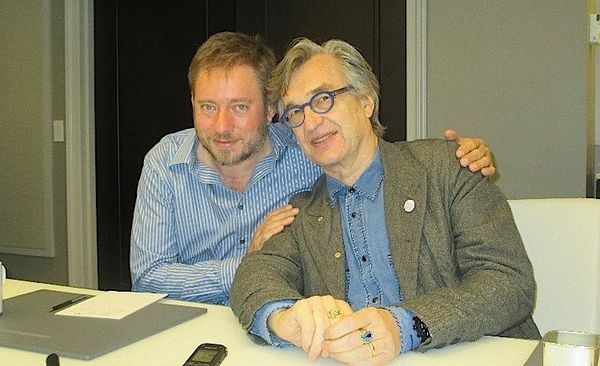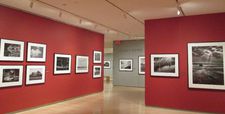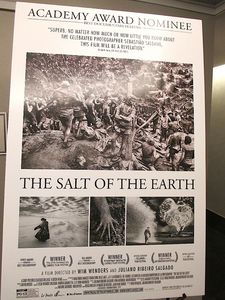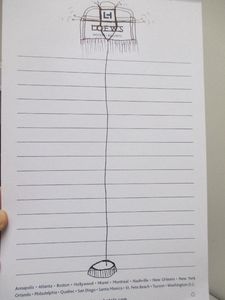 |
| The Salt Of The Earth (Le Sel De La Terre) directors Juliano Ribeiro Salgado and Wim Wenders Photo: Anne-Katrin Titze |
Photographer Sebastião Salgado's images on the big screen are a visual gift as much as the subject matter of his work is a scream for change. Salgado, when we first see him in The Salt Of The Earth (Le Sel De La Terre), could be John Ford looking out over the plains. Co-directed by Wim Wenders, in silvery black and white, with the photographer's son, Juliano Ribeiro Salgado, shooting in colour, the film raises awareness through storytelling that can have the composition of a Bruegel painting or show a father's personal tragedy with the force of Schubert's Erlkönig.
 |
| International Center for Photography - Sebastião Salgado Genesis exhibition Photo: Anne-Katrin Titze |
Anne-Katrin Titze: Would you say the story is what is protecting the photography?
Wim Wenders: Yes, it's the knowledge that led him to take his photographs and to share this process of getting involved with all those people and their situations. And, you see, Sebastião has this uncanny ability to become part of the humanity he is witnessing. And I was of course very curious how was this possible, because I saw something in his photographs that I didn't see in any other photographs. I saw an empathy and I saw an immersion and I wanted to understand that. And I finally found out that it's time.
This man spends more time with these people and he spends more time to prepare himself. And then when he goes there, he doesn't take the next plane out because it's uncomfortable - he stays and lives with these people under their conditions. He shares the same food and he stays and he comes back - he sometimes comes back countless times because he feels that he has made friends and he can't abandon them. He has a different implication. And for me that was a huge discovery and it was also a slow realisation that I only had a right to make a film about this man, if I did the same, if I applied his own rules. And that meant that I had to spend three and a half years with him and his son in order to have a right to make this movie.
 |
| The Salt Of The Earth US poster |
If I hadn't known he was a great storyteller, I don't think I would have dared to enter the territory of a movie. Because photos in a film need protection. Without protection they become a slide show.
Wim in the film calls the photographs "writing in light" and they are about what it means to be human. Starting with the famous Serra Pelada gold mine photographs, the documentary devotes time to major projects: The Other Americas, Sahel: The End Of The Road, Workers: Archaeology Of The Industrial Age, Exodus and Genesis.
Juliano Ribeiro Salgado: He [his father Sebastião] manages to connect with people intuitively. He knows where to put the camera so you actually feel that emotion, that thing that is happening there between him and the person, or the landscape, sometimes. You feel that. That breaks the distance, you know. It's amazing when you see his pictures, that you really don't feel distance with people who have such different lives than we have. He can put those emotions into a picture.
Juliano's childhood in Paris and his father's early photography travels for The Other Americas to "his continent" are a part of the superhero mystique as is their more recent collaboration, which shows the Salgados rolling around an icy gravel beach, aping a polar bear to get closer to a walrus gathering. The way photographs and interviews with Sebastião Salgado are projected over one another like a palimpsest aids the sensitive celebration.
 |
| Wim Wenders doodle |
Juliano: I discovered Sebastião, to be honest with you, when I saw Wim's interview with Sebastião. When I saw the result of that, seen by Wim's eyes, it helped me to take that further step to actually complete our healing process…. It's not a long process, it's something that happens suddenly.
Wim: I became the family therapist.
There is a kinship in spirit between Sebastião Salgado's work and that of the late great choreographer poet Pina Bausch that Wenders remembers in Pina. And, why not, let's include fashion designer Yohji Yamamoto, subject of his 1989 documentary Notebook On Cities And Clothes. All of them show us the familiar from a startling new angle. This latest exploration is different, though, because "when you have a photographer in front of the camera - he shoots back."
Wim Wenders received an honorary Golden Bear for lifetime achievement on February 12, 2015 during the Berlinale and a retrospective of his films was held in March at the Museum of Modern Art in New York.
César winner for Best Documentary, The Salt of the Earth opens in the US on March 27 and in the UK on April 24.





















